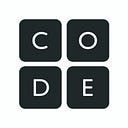It’s hard to believe how much the world has changed in just a few short months.
When the novel coronavirus began disrupting daily life and the education system earlier this year, our staff at Code.org — along with millions of students and teachers around the country — didn’t know what to expect or how long the disruption might last.
As schools closed around the world, it slowly became clear that the typical classroom experience was a thing of the past. We sought to create new ways to keep computer science students engaged and learning while supporting teachers in an unprecedented transition from in-person classroom instruction to a new online world.
After an all-staff brainstorming session, a new idea emerged, and we introduced Code Break — a live, interactive computer science lesson led by our founder and CEO Hadi Partovi, his daughter Sofia and a number of special guests. The concept was simple: provide a weekly dose of inspiration, community, and computer science to students all around the world.
But the reality of creating Code Break was somewhat of a leap of faith. We’re a passionate team with expertise in computer science education, but a small group of us had to pivot and essentially produce a live TV series each week! It was well outside our wheelhouse, but we were excited and up to the challenge.
Code Break featured some of the most notable figures in computing, music and entertainment. Our special guests included Bill Gates, China Anne McClain, Mark Cuban, Hill Harper, Ashton Kutcher, Susan Wojickici, Macklemore, Kat Graham and many others.
Each lesson focused on a different computer science topic — from hardware, to algorithms, to simulations and data, and more.
We set out to create the world’s largest live, interactive classroom, and despite varying time zones, borders and language barriers, Code Break engaged thousands of students around the world, from Hawaii to Ghana to India and Australia.
To keep students interested and engaged, we incorporated interactive lessons and activities to show how computer science impacts students’ daily lives and connects to their existing interests.
Our episode with Bill Gates, for example, focused on how we can use data to fight disease by simulating its spread through a population, how to visualize data, and a look at how computer science is revolutionizing medicine. Students can find and complete any activity from a Code Break lesson at Code.org/break!
Code Break is more than just an online lesson — it’s also meant to encourage and inspire students to continue learning computer science, especially during these chaotic and uncertain times.
Many guests shared motivating stories about their path to computer science, as well as why diversity and equitable representation is so crucial.
While we’re no longer producing new episodes of Code Break, we encourage students to visit Code.org/break to watch any episodes they missed. Each lesson also has unique projects for students of all ages, including unplugged lessons. As students complete projects over the summer, use the hashtag #CodeBreak to share them with us on social media.
Thanks again for every student, parent and teacher who joined us for the live episodes, and to everyone who showed us your Code Break creations on social media.
We’re so excited for many more students to discover the Code Break archive of activities and videos for the first time this summer!
-The Code Break team
